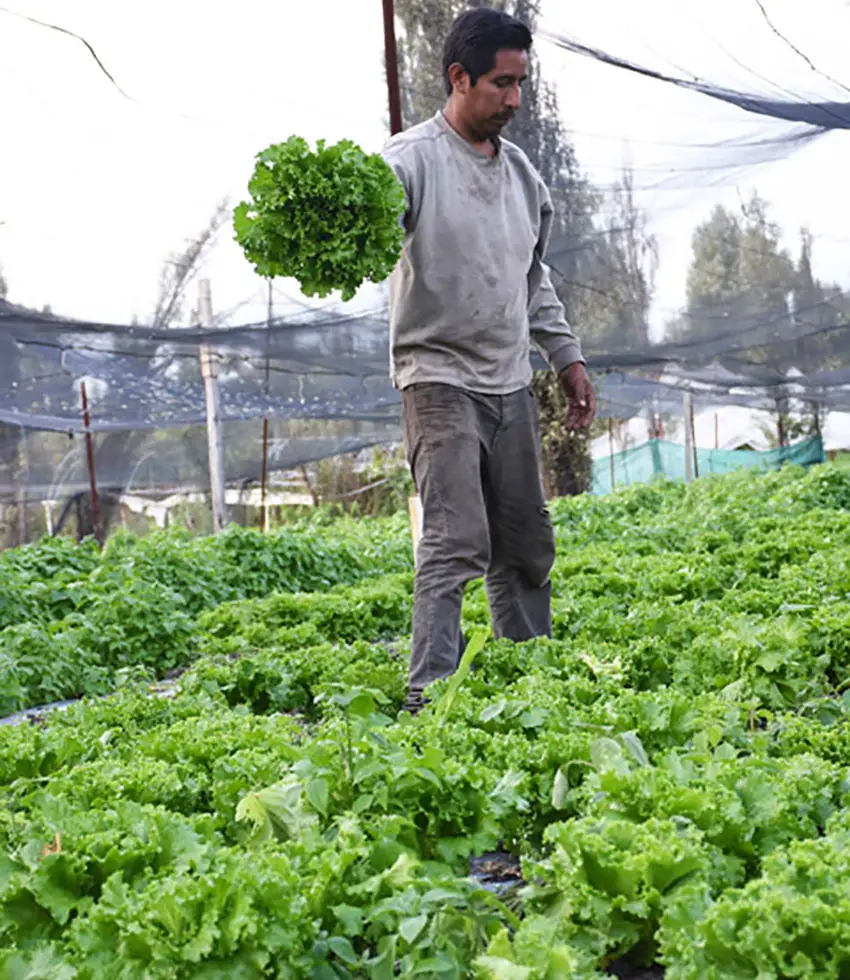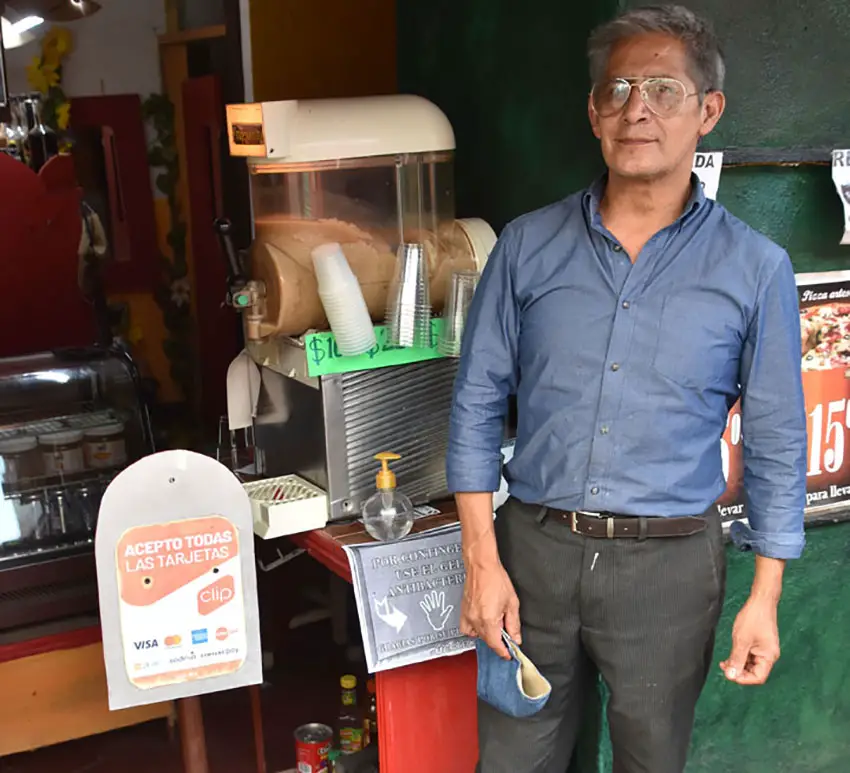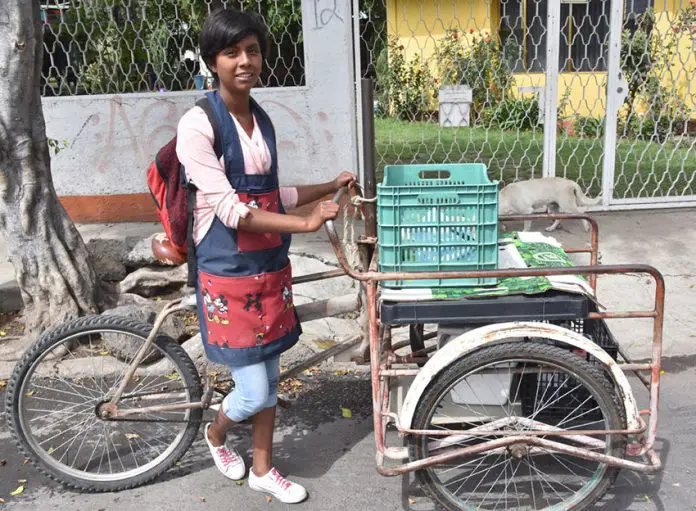It’s the rainy season, a time when the chinampería — San Gregorio Atlapulco’s agricultural area — is at its most productive, a time when the pueblo’s market is normally overflowing with produce and filled with people, street vendors and noise.
But these are anything but normal times. The market is nearly empty and unsettlingly quiet.
The pandemic is raging in San Gregorio, which continues to be one of the pueblos with the highest number of cases in all of Mexico City. So the borough of Xochimilco, in which San Gregoria is located, is taking steps — finally — to try to curb it and has been focusing its efforts on the market, which is the center of the contagion.
In early July, officials cleared the streets in the market: no more people selling produce from wheelbarrows and small stands, no more street vendors. Stores remained open but everything was pulled inside. Although these were necessary steps, the overwhelming majority of people working in the market live a day-to-day existence. If they were just eking out a living before the pandemic hit, they’re barely surviving now.
During the weeks when they weren’t allowed to sell produce from their stand, Carmen Cruz Sánchez and her husband (both are chinamperos, as people who work in the chinapería are called) scrambled to survive. “We sold to others in the city,” Cruz Sánchez said, “but in truth, there were very few sales. Campesinos were losing everything during that time.”

One day she was in the market and approached officials from Xochimilco. “I told them we want to work, we need to work,” she said. “We know the situation we are in but the government is not helping. We have an employee and to pay him, we need to work.”
Officials agreed to start letting some, but not all, vendors return. “The authorities said we have to have masks, gloves and the plastic [surrounding the stands],” she continued.
The market’s hours have been shortened, there are fewer shoppers and the size of the stalls has shrunk, affecting how much people can earn. “… before the pandemic, on a Sunday, we would earn around 500 pesos [US $23],” said Cruz. “Now we are lucky to earn 100 or 150.”
For eight years, Eduardo González Morales sold gorditas — small pastries filled with jelly or cajeta — from a cart, earning 300 pesos a day. “It was really only enough to survive,” he said. When officials shut him down, he started working with his mother, Gabriela Morales Manilla, selling fish in the market. Business is very slow.
“Before, I earned 1,500 pesos a day,” Morales Manilla related. “Now I earn just enough to eat, maybe 500.” She shares the money with her son, who is very frustrated. “The government wants us to stop,” he said, “but they do nothing to help us. Nothing. It is very difficult now. I have responsibilities and I have to keep working. There are people who depend on me. I have three children.”
When the borough closed her stand in the market, Florita Reyna Avarca did what many people in the pueblo have done: she opened one in front of her home. She and a friend are out there seven days a week, eight hours a day. “We earn 200 pesos a day,” she said. “In the market, I would earn 500.” She admitted she’s afraid to continue working but, “The borough does not help and we need to work to maintain our family.” She has three young children.

While Avarca and others were hit hard by the closings, Berenice Muñoz Raya saw a business opportunity.
The 20-year-old used to work in the market directing people to the mototaxis that prowl San Gregorio’s streets. When she noticed that people had stopped going to the market, she quit the mototaxi stand, got a heavy-duty three-wheeled bike and started selling produce door to door.
“Yes, it is hard work but I like it because it is my own business and I keep what I earn.” Unfortunately, she may be delivering more than just vegetables. Although she comes in close contact with a lot of people during her workday, she doesn’t wear a mask. “I do not believe in masks,” she said. “I do not use gel. I do not believe in the pandemic.”
Although she knows about the high number of viral cases in San Gregorio, she remains steadfastly unconcerned. “A lot of people die every day,” she said.
Erick Serralde and his brother Juan farm land in the chinampería that’s been in their family for four generations. It’s the only work they’ve ever known. They sell their vegetables in the Central de Abasto wholesale market in Mexico City and to individuals in the Polanco neighborhood but with many people out of work, their income has dropped drastically.
“I have never seen anything like this,” said Erick Serralde. “Never. There is work here but there is no money.” They have two employees and they typically pay them 250 pesos a day. But they can no longer afford that and they’re doing what many chinamperos are doing. “We are paying them now with vegetables that they can sell,” he said.

Closing the market stalls in San Gregorio hasn’t just affected people who usually work there. Many others in the pueblo are also suffering economically.
La Molienda is a tiny cafe known for its coffee and pizza but it’s barely hanging on. “Before the pandemic, I earned an average of 1,500 pesos a day, [and] every day I had 20 customers,” said Valentin Zavala, the owner. “Now, maybe 500 pesos a day, [and] four or five people. I used to have one other employee but now it is just me and my son.”
He had started renovating the cafe but had to stop. “I do not even have money to finish painting the walls.” He’s using his savings to get through and economizing wherever he can. “Every peso is important,” he added. “People are afraid to leave their homes. There are no sales, no events, nada.”
Although he’s worried, he retains a sliver of optimism. “San Gregorio Atlapulco is very generous,” he said. “If I have, I give.”
Joseph Sorrentino is a regular contributor to Mexico News Daily and writes from his home in San Gregorio.
